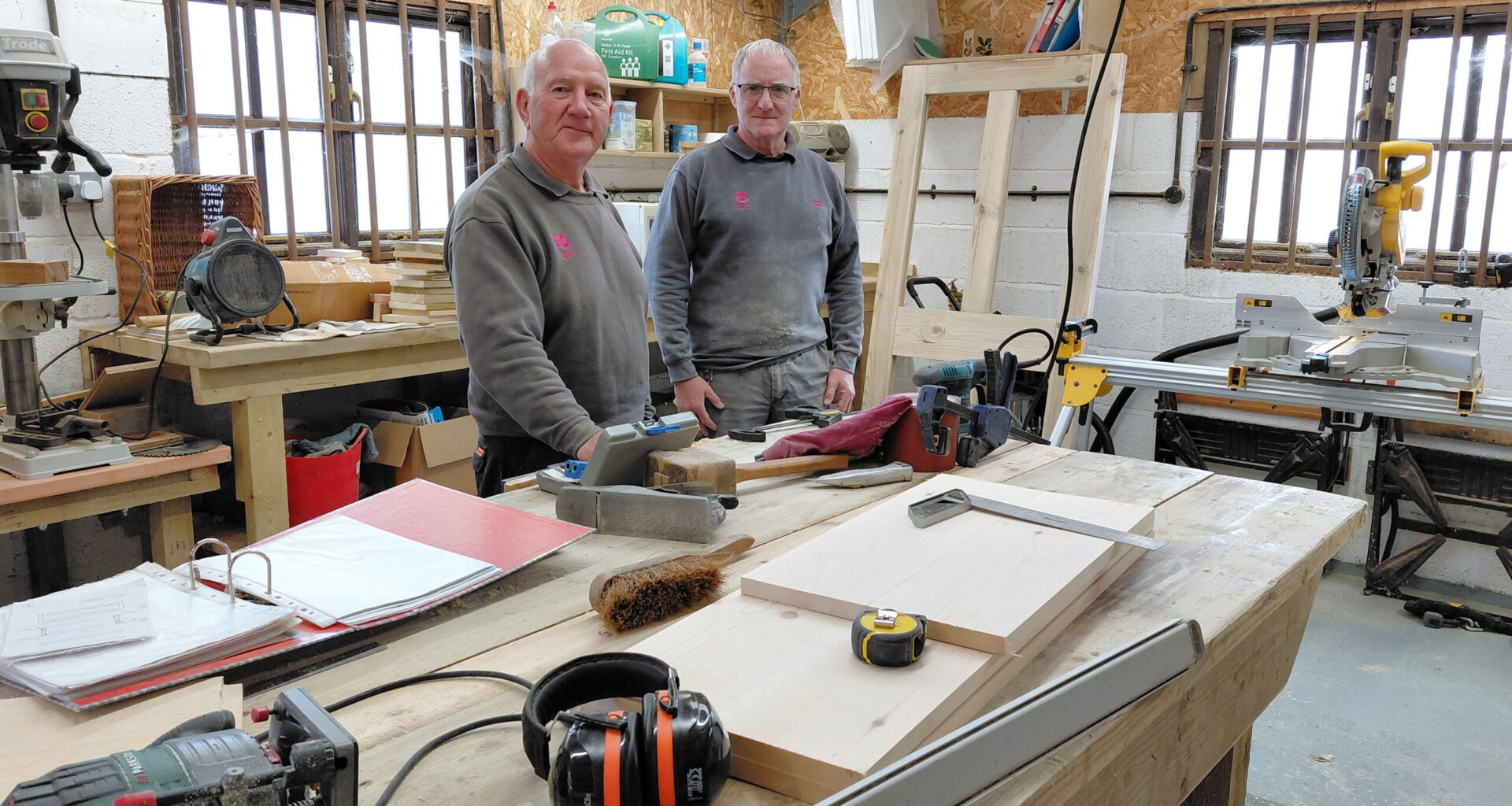Volunteer carpenters for the National Trust in Purbeck have been hard at work on a life saving mission – to stop majestic barn owls drowning in farm troughs.
Tony Underwood, David Sutcliffe, Bernard Longstaff and Dave Hancock – the Thursday Crew – have been tasked with making rafts for farms at Worth Matravers and Corfe Castle which will allow cattle to drink from troughs, while preventing heavy birds from sinking.
Advertisement
 NATIONAL TRUST / MIKE WENHAM
NATIONAL TRUST / MIKE WENHAM
A barn owl in flight at Weston Farm, Worth Matravers
Owl feathers are not very waterproof
Like most birds, barn owls need to bathe, but their feathers are adapted for slow, silent flight so they aren’t very waterproof and if they fall into a trough, their feathers absorb the water causing them to sink.
The situation is made worse by the fact that most troughs are made out of stone or metal and have steep sides, giving the birds little chance to escape.
After barn owls were found dead in troughs on National Trust farmland in Purbeck, area rangers researched the problem to find that it was sadly quite a common problem
But after the Barn Owl Trust suggested rafts made of treated timber and strong plastic mesh, with polystyrene to keep them afloat, the Purbeck National Trust Thursday Crew carpentry volunteers were asked to make some for trials on Weston Farm, Worth Matravers, and Scotland Farm, Corfe Castle.
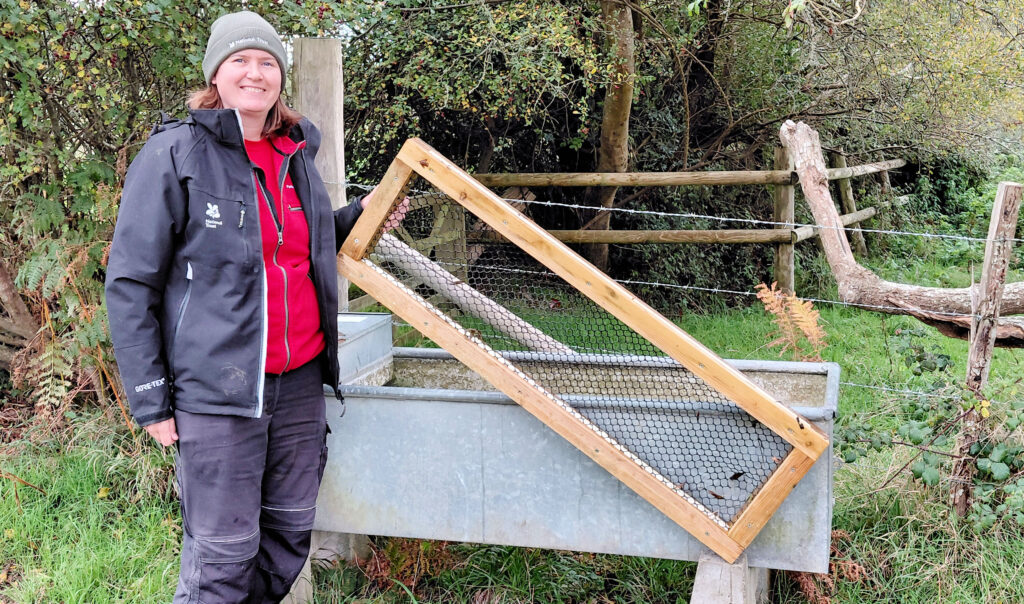
National Trust Purbeck area ranger Rebecca Eddy with one of life saving rafts
“They are at particular risk”
Rebecca Eddy, area ranger for National Trust Purbeck, said:
“We were devastated when we found a dead barn owl in a cattle trough and discovered that they are at particular risk as their feathers have evolved for silent flying, sacrificing a lot of their waterproofing in the process.
“So we did some research, found a recommendation for rafts from the Barn Owl Trust and spoke to our amazing team of carpentry volunteers to see if they were able to take on the project – and luckily they were.
“We are trialling the rafts at Weston Farm and Scotland Farm because we want to be sure cattle can still drink from them before we roll them out any further, and because we’ve had regular sightings of barn owls there.
“Ideally, we would put them in across all the farmland we care for, which is more than 150 troughs, but because of cost and capacity, we will start to prioritise the sites where we know barn owls are nesting.
“As a charity, we also need to bear in mind that the rafts will need replacing after around five or ten years as they start to degrade, so that’s a further cost – but we may be able to improve them by not using plastic and polystyrene by that point.”
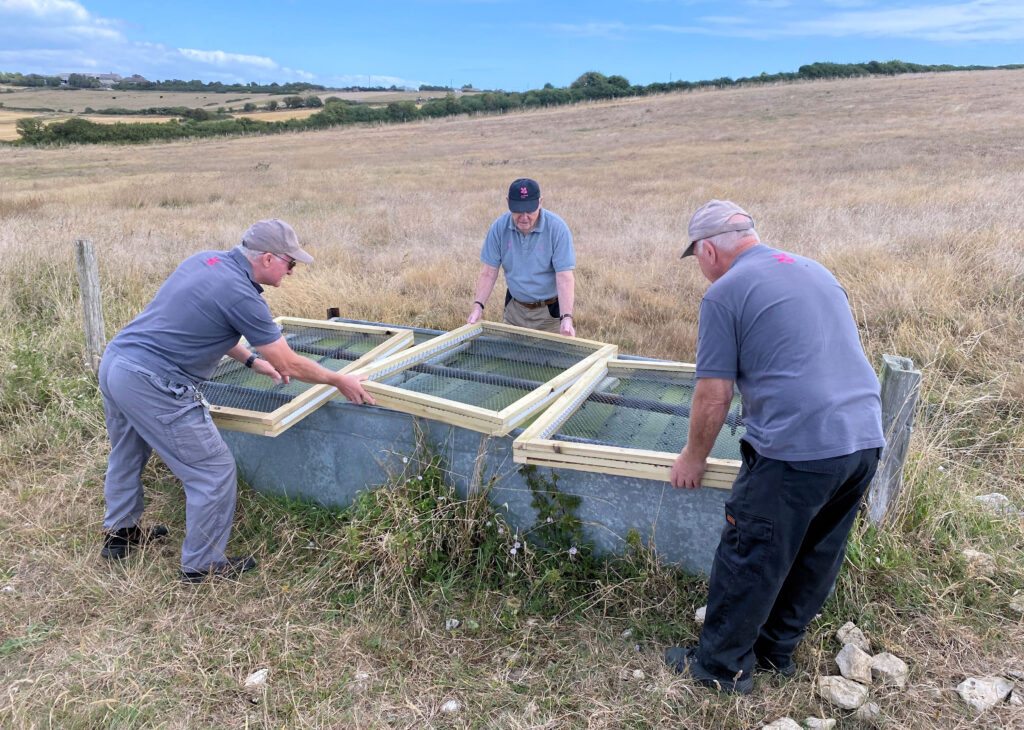
The Thursday Crew installed rafts in four trial troughs at the end of summer 2025
“Such iconic farmland species”
Rebecca added:
“Barn owls are such beautiful and iconic farmland species, and we want to do all we can to help them.
“Although they aren’t classed as rare in the UK, there is concern that they might suffer due to the effects of climate change, especially from droughts and heavy rainfall , and by the use of agricultural chemicals which reduce numbers of the small mammals that they feed on.
“Since we bought Weston Farm in 2022, we’ve been allowing the fields to return to species rich grasslands and wildflower meadows, and creating areas wood pasture, a favourite of songbirds.
“We are already seeing an increase in insects and small mammals, which in turn feed many different birds and bats.”
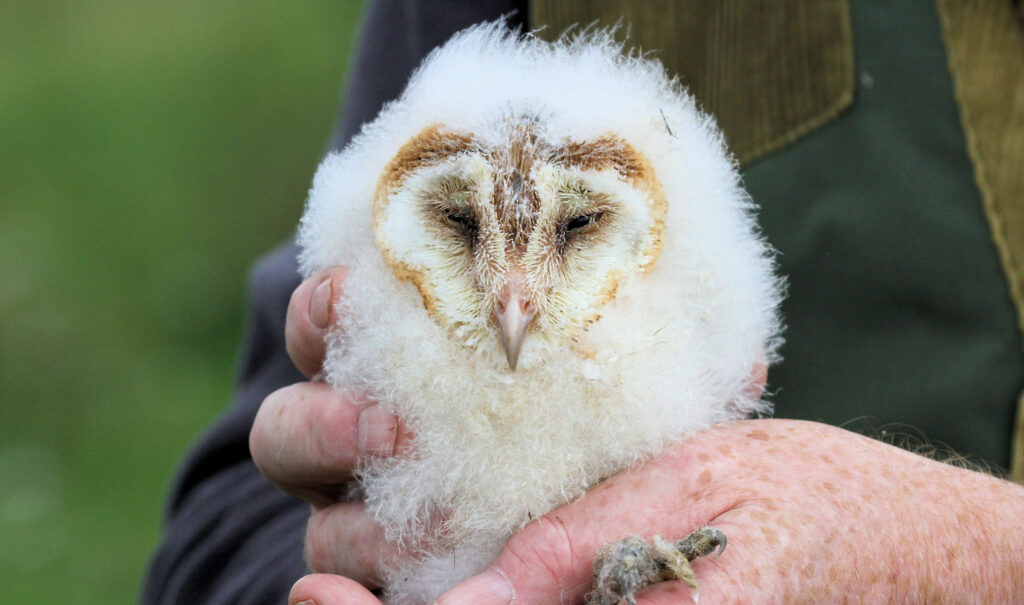 NATIONAL TRUST
NATIONAL TRUST
Juvenile barn owls are at particular risk as they explore their surroundings for the first time
Birds found dead in cattle troughs
It is thought that almost 10 percent of all barn owl deaths are birds found dead in farm cattle troughs and other steep sided water containers like butts or even buckets.
Natural places for birds to bathe, like ponds and streams, have shallow edges, and ditches have rough sides, and they don’t expect small bodies of water to be deep, and cannot escape from containers made from slippery materials like steel and plastic.
One water trough in the South West was found to contain the bodies of two barn owls, two little owls and a falcon, and the problem is particularly bad in autumn when the inexperienced summer juveniles are starting to explore their surroundings.
Other ideas to prevent deaths, such as floating a log or piece of timber in the water, having a long length of timber sticking out of the water, or floating bakers’ bread trays in water troughs have not worked.

David Sutcliffe and Tony Underwood with a quoits board they made for Corfe Castle
“Satisfying to work on the rafts”
Volunteer National Trust carpenter Tony Underwood, based at Hartland Farm, said:
“The Thursday Crew have worked on a lot of different projects for the National Trust, from fencing, doors and gates to the trebuchet at Corfe Castle.
“There used to be a tiny trebuchet there, but we built a full size, working version, which we called Betty – although we have had to pension her off recently because the bearings have started to go.
“We are also making owl nesting boxes, bug hotels, play equipment for Corfe Castle, wheelbarrows, Christmas trees and much more, but it was really satisfying to work on the water trough rafts.
“We were given instructions on making rafts from the Barn Owl Trust and made them to size for the trial sites in Purbeck. We hope they are successful in saving the lives of these beautiful birds and that we’ll be making many more in future!”
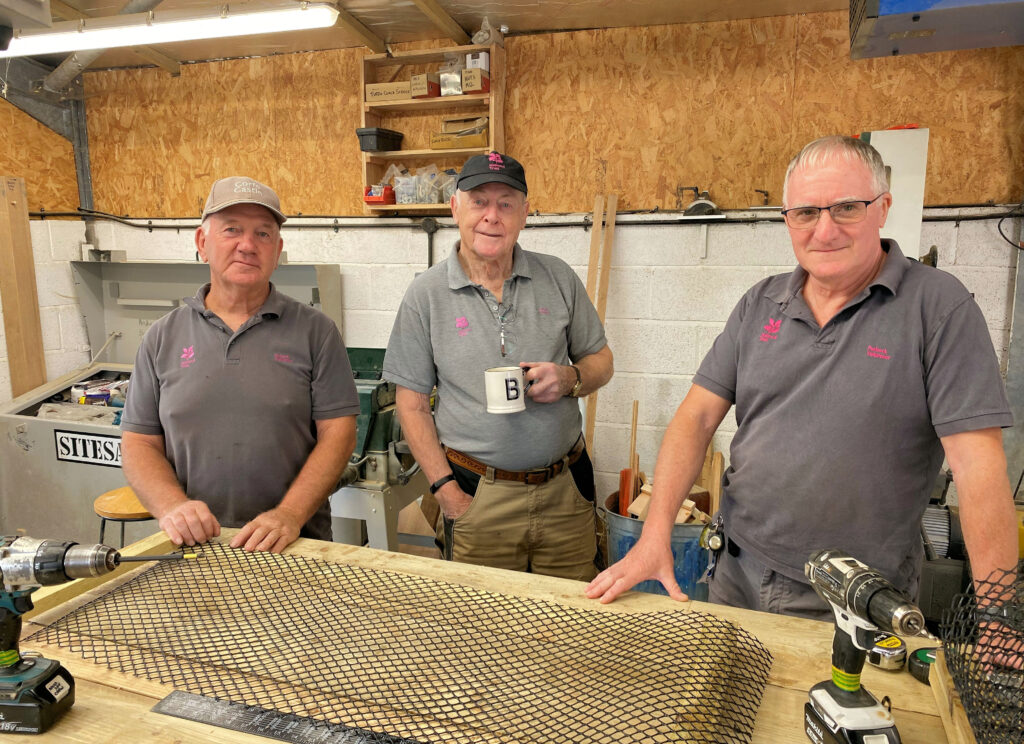 NATIONAL TRUST
NATIONAL TRUST
Members of the Thursday Crew start work on one of the life saving rafts
Keep areas of grass uncut
Barn owls, which have a distinctive heart-shaped face, buff back and wings and pure white underparts are nocturnal and eat mice, voles, shrews and some larger mammals and small birds.
To encourage barn owls onto a farm, farmers are encouraged to keep areas of grass uncut to create a good habitat for the owl’s main food source, the vole.
Almost all barn owl pellets are found to contain traces of rat poison, and it is known that a large number die as a direct result of it.
Farmers are encouraged to deal with rat problems, primarily by restricting their access to food, using cage traps and being tolerant of foxes.
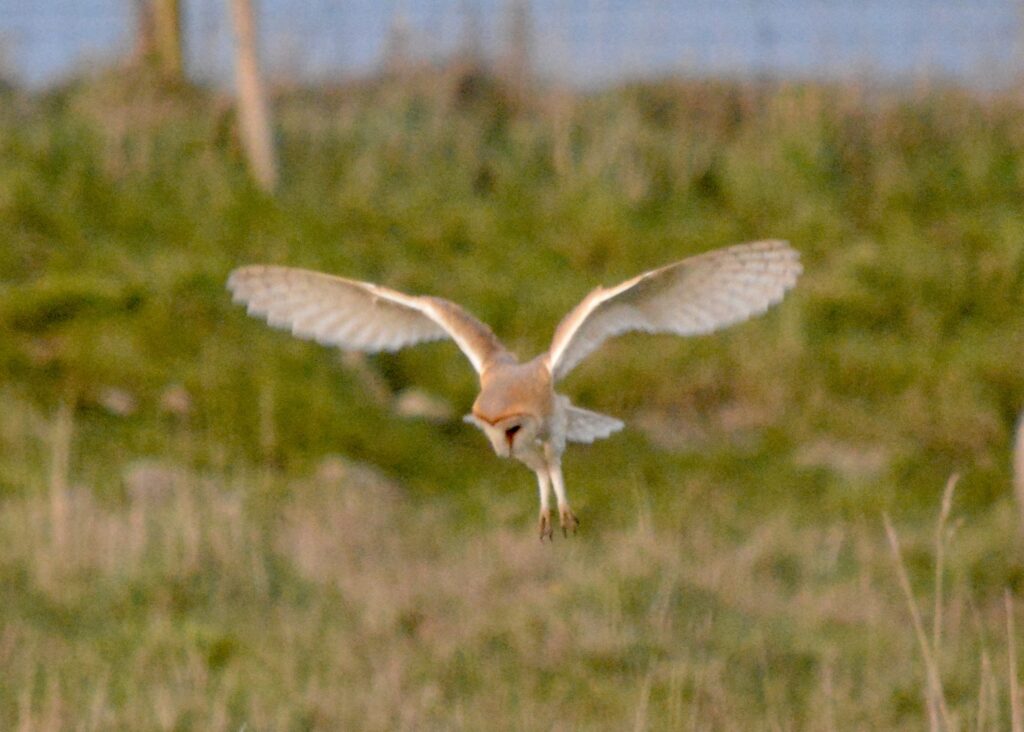 NATIONAL TRUST / MIKE WENHAM
NATIONAL TRUST / MIKE WENHAM
The sight of ghostly barn owls flying over Purbeck fields at twilight is always satisfying
Further information

